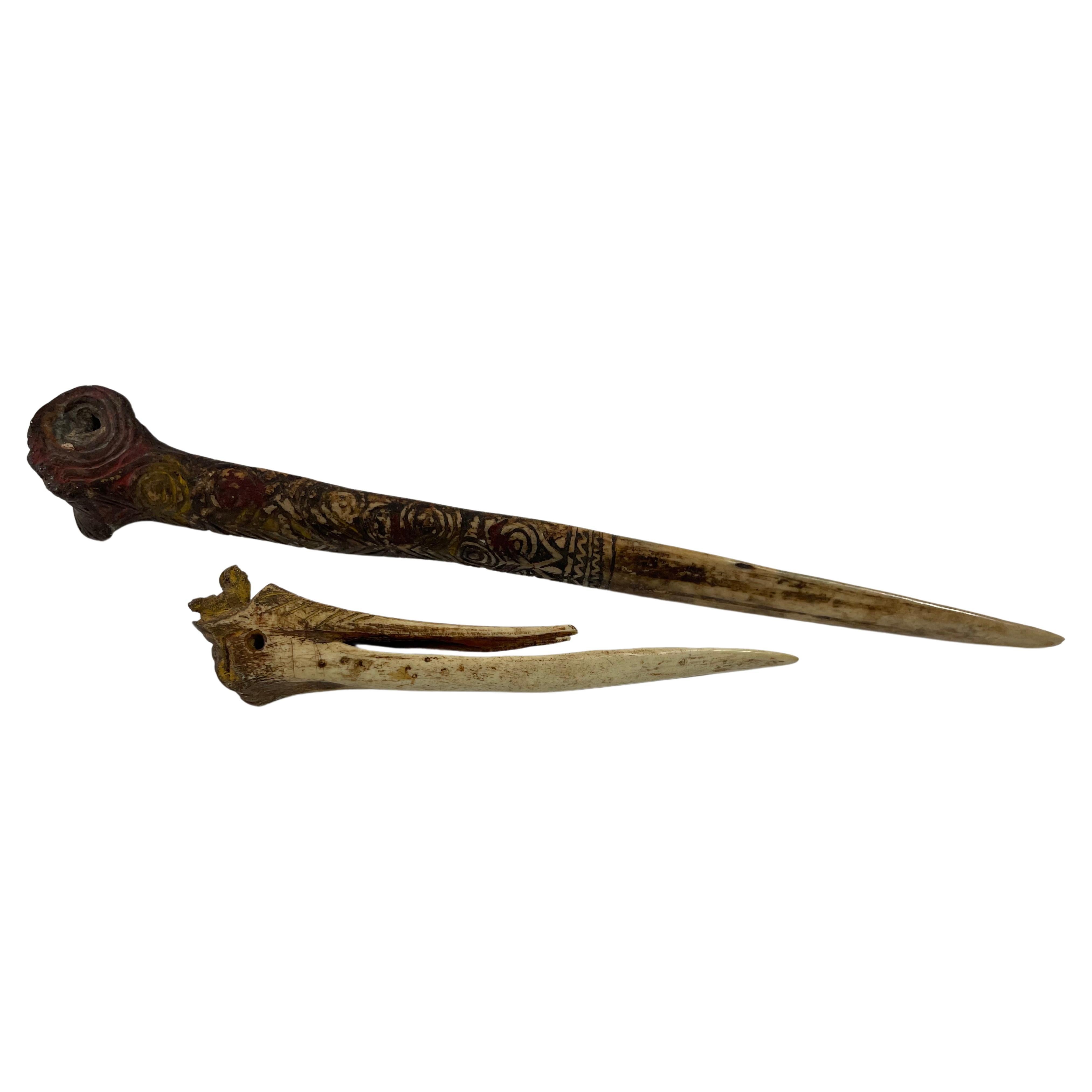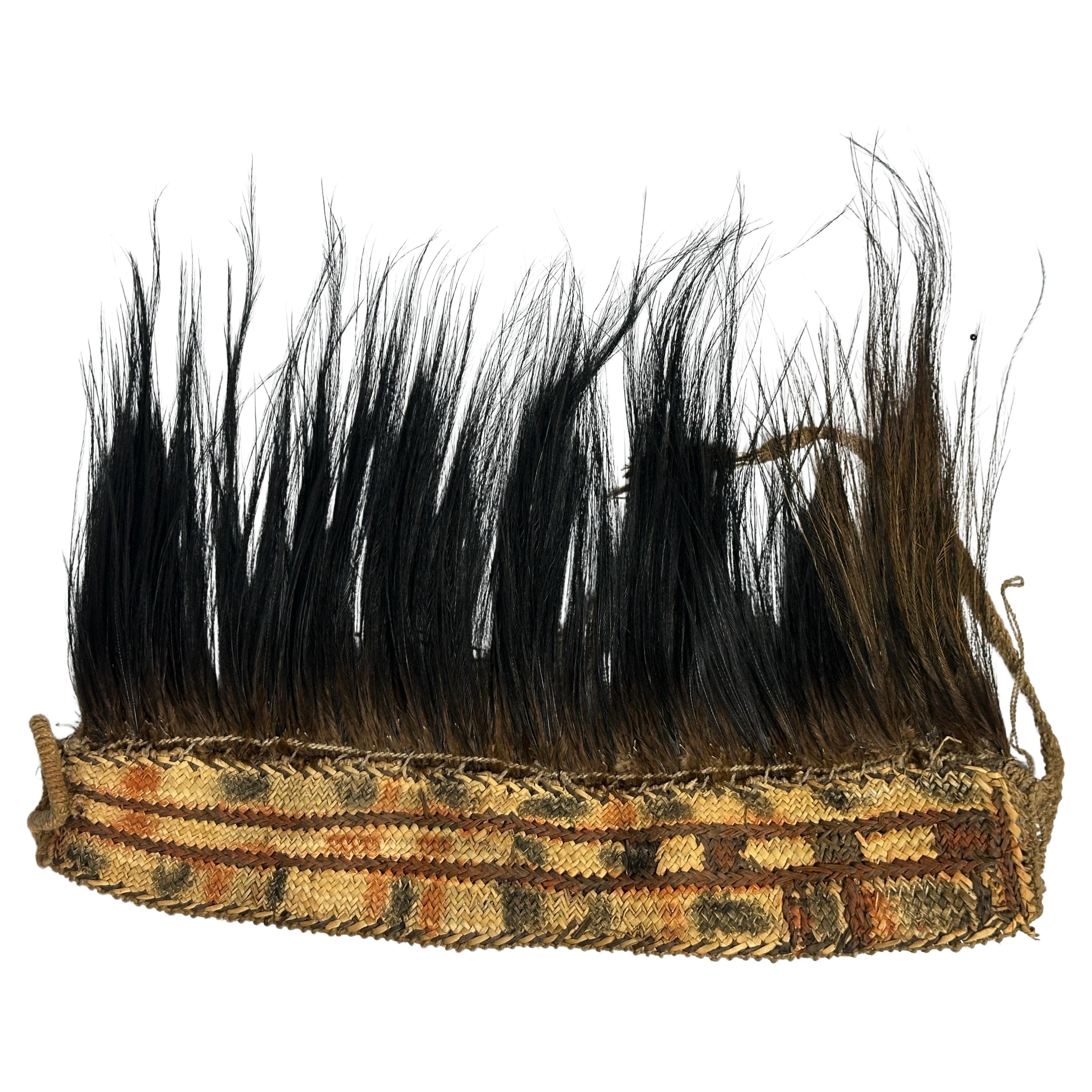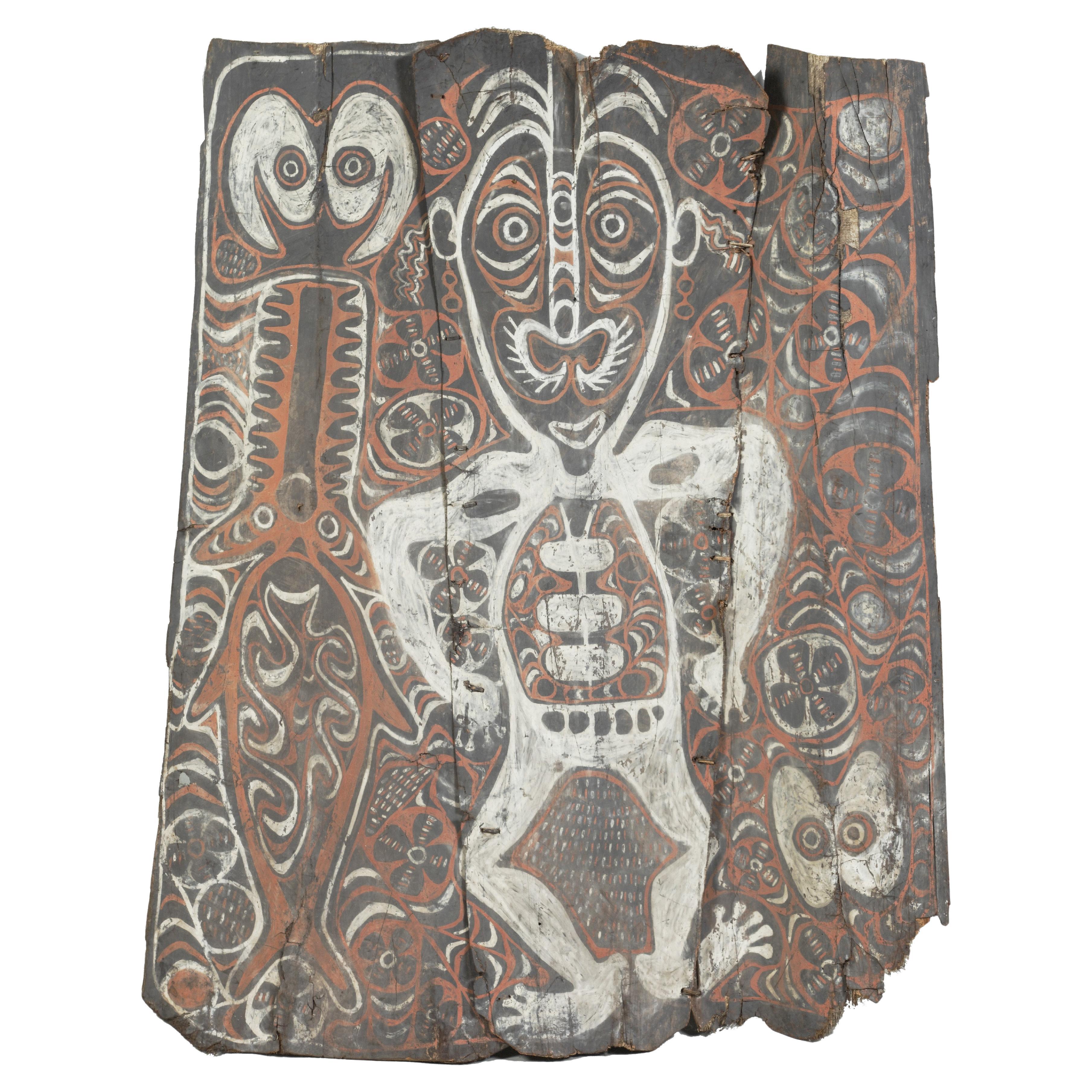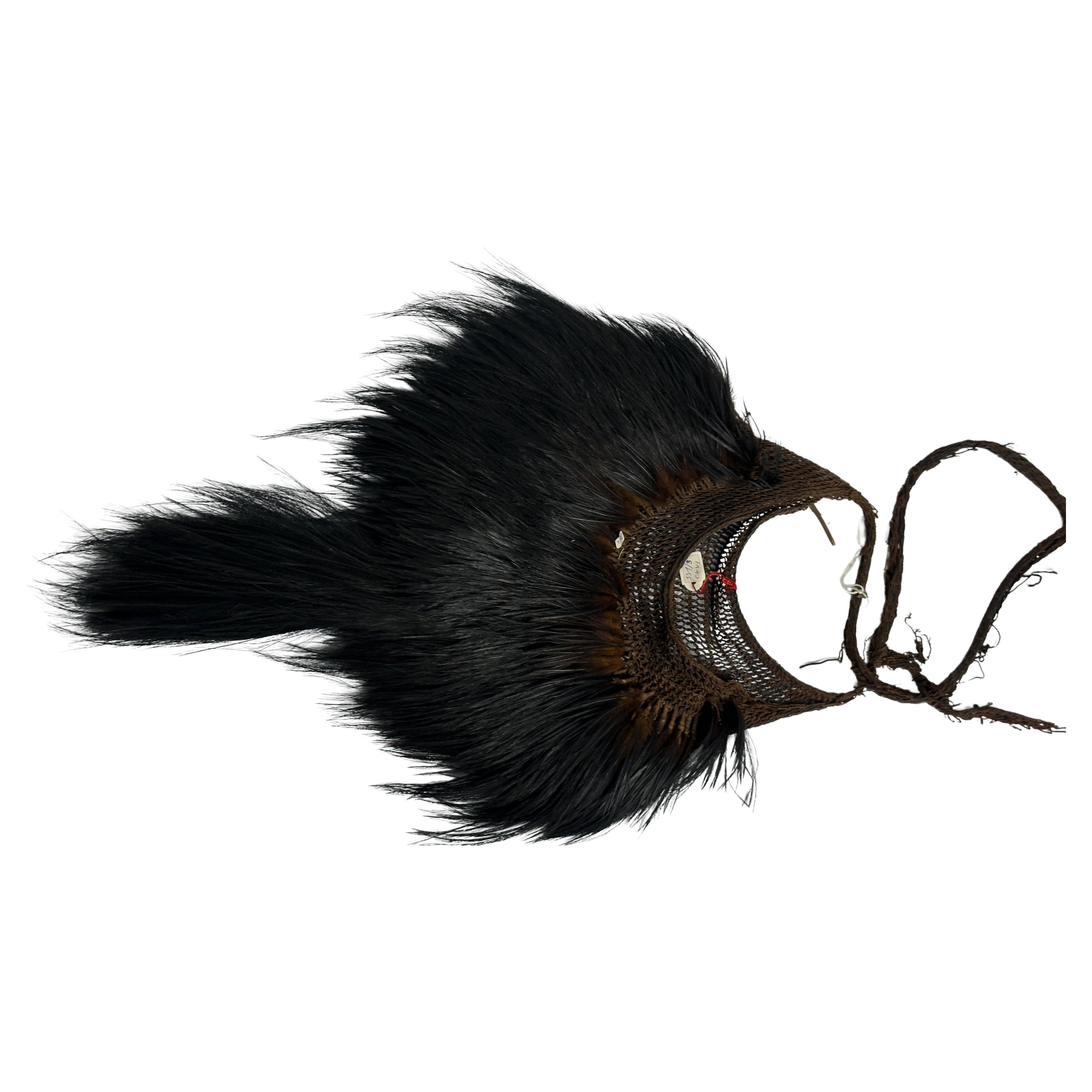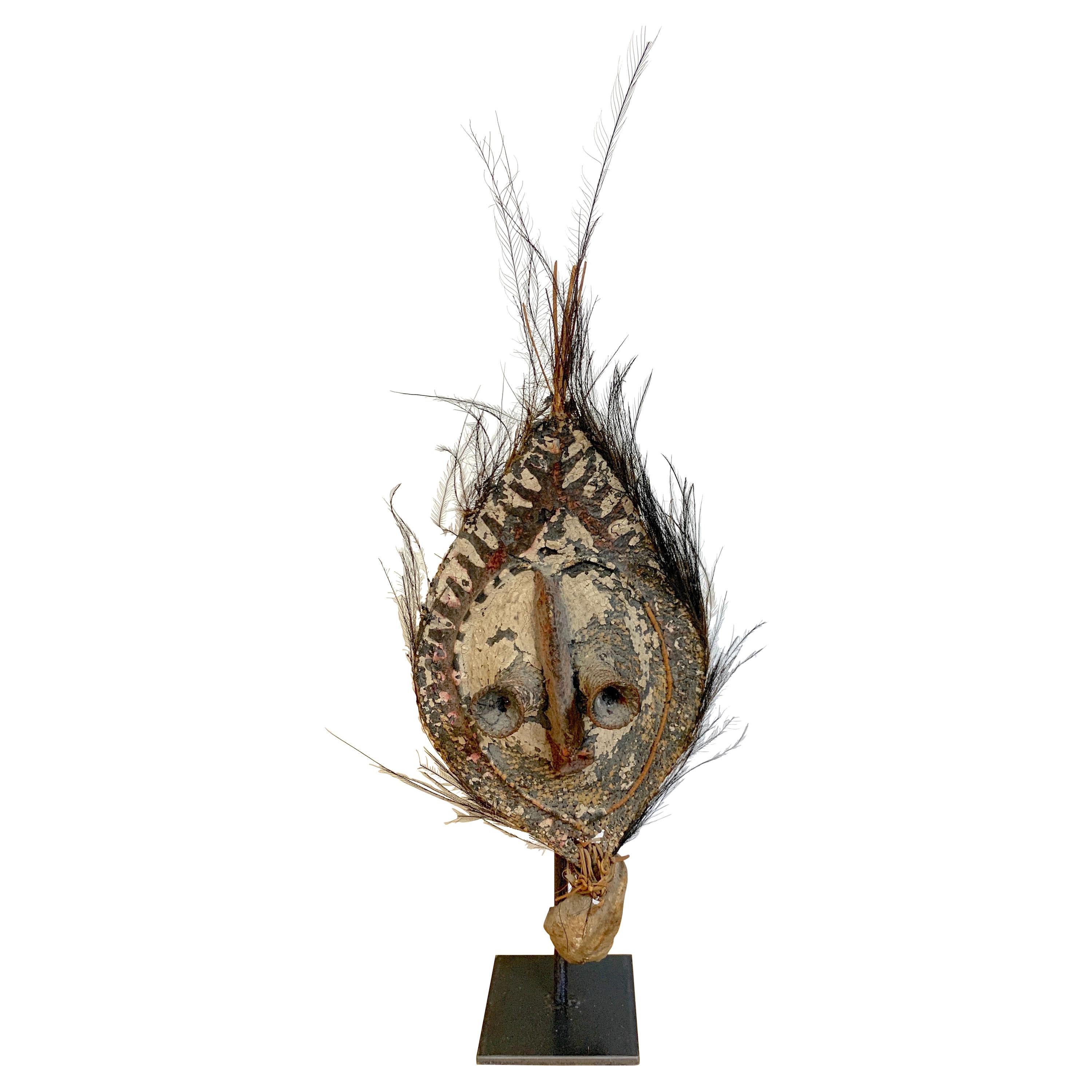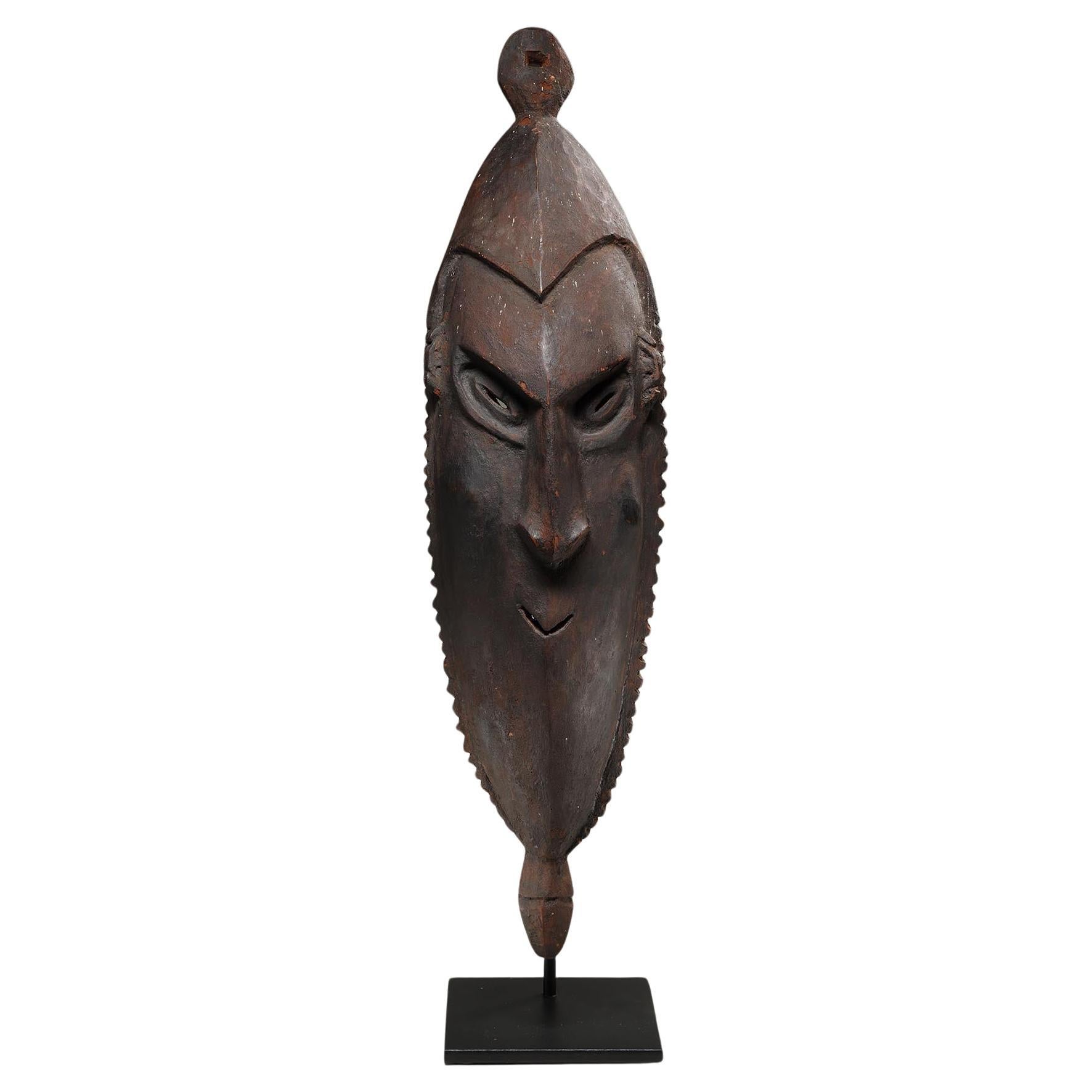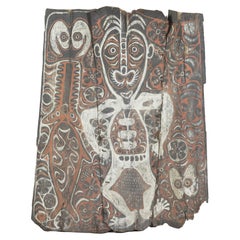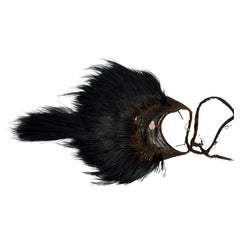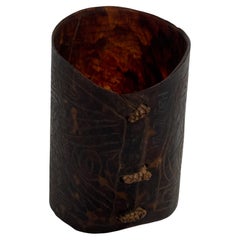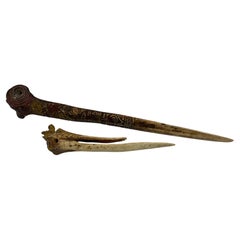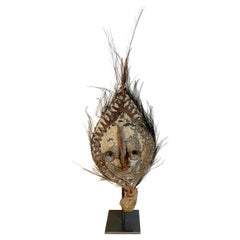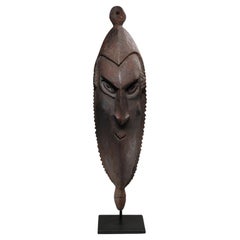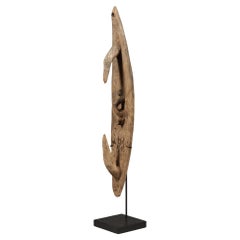Items Similar to An engraved Sepik cassowary bone dagger
Want more images or videos?
Request additional images or videos from the seller
1 of 3
An engraved Sepik cassowary bone dagger
About the Item
Papua New Guinea, Sepik Region, Abelam people, early 20th century
Bone daggers in the Sepik region are traditionally crafted from the thigh bone of the cassowary bird (moruk in Tok Pisin), a large, flightless bird native to Papua New Guinea. These daggers, often adorned with intricate ancestor and clan designs, reflect the cultural and symbolic significance of the weapon. Warriors carried these multipurpose tools in a woven band on the upper arm or on a cord around the neck for use in close-quarters combat, hunting, digging, ceremonial sacrifices, and as decoration during singsing (dancing) events. The blunt-edged, sharp-tipped daggers were primarily used for stabbing, often delivering a final blow to an enemy incapacitated by spears or arrows or in stealthy assassinations.
Daggers were also considered powerful supernatural objects, playing key roles in male initiation and other ceremonies. They were worn as personal ornaments, and those with blunt tips likely served ceremonial purposes. When the tip became too damaged, the dagger was often repurposed into a lime spatula or thatch-sewing tool. Although cassowary leg bones were the primary material, in rare cases, daggers were made from the femurs of ancestors or enemies
Provenance:
Collection Rinck Hollnberger, Munich (purchased the 1990's)
- Dimensions:Height: 13.39 in (34 cm)Width: 1.58 in (4 cm)Depth: 1.97 in (5 cm)
- Materials and Techniques:Bone,Engraved
- Place of Origin:
- Period:
- Date of Manufacture:late 19th/early 20th century
- Condition:Wear consistent with age and use.
- Seller Location:Amsterdam, NL
- Reference Number:1stDibs: LU5458242061932
About the Seller
5.0
Recognized Seller
These prestigious sellers are industry leaders and represent the highest echelon for item quality and design.
Established in 1985
1stDibs seller since 2020
23 sales on 1stDibs
Typical response time: 1 hour
- ShippingRetrieving quote...Shipping from: Maastricht, Netherlands
- Return Policy
Authenticity Guarantee
In the unlikely event there’s an issue with an item’s authenticity, contact us within 1 year for a full refund. DetailsMoney-Back Guarantee
If your item is not as described, is damaged in transit, or does not arrive, contact us within 7 days for a full refund. Details24-Hour Cancellation
You have a 24-hour grace period in which to reconsider your purchase, with no questions asked.Vetted Professional Sellers
Our world-class sellers must adhere to strict standards for service and quality, maintaining the integrity of our listings.Price-Match Guarantee
If you find that a seller listed the same item for a lower price elsewhere, we’ll match it.Trusted Global Delivery
Our best-in-class carrier network provides specialized shipping options worldwide, including custom delivery.More From This Seller
View AllAn Asmat headdress decorated with cassowary feathers
Located in Amsterdam, NL
Asmat, Papua Province, Indonesia, Late 19th century
Provenance:
- Collection Rinck Hollnberger, Munich (purchased in the 1980s or 1990s)
Category
Antique Late 19th Century Indonesian Tribal Art
Materials
Natural Fiber, Feathers
A Sepik 'panggal' sago spathe or tree bark painting of an ancestral figure
Located in Amsterdam, NL
East-Sepik Province, Keram River, early 20th century
The painting in non-binded pigment on sago spathe, bark of a sago palm, depicts an ancestral figure surrounded by a saw fish...
Category
Early 20th Century Papua New Guinean Tribal Art
Materials
Wood
Cassowary feather Bilum bag from Papua
Located in Amsterdam, NL
Papua New Guinea, early 20th century,
A Bilum bag from Papua New Guinea, crafted from bark fiber and adorned with cassowary feathers.
Provenance:
- Collection Rinck Hollnberger, Mu...
Category
Early 20th Century Papua New Guinean Tribal Art
Materials
Natural Fiber, Feathers
A delicate tortoiseshell 'armband' from the Lower Sepik River Province
Located in Amsterdam, NL
Sepik River Province, Papua New Guinea, probably late 19th century
Tortoiseshell bracelets are frequently more than just ornaments in Sepik River civilizations; they are representat...
Category
Antique Late 19th Century Papua New Guinean Tribal Art
Materials
Tortoise Shell
An Illongot headdress
Located in Amsterdam, NL
Ifugao, Northern Philippines, 19th century
Decorated with different kinds of beadwork and the bill of a Kalaw bird (hornbill).
Historically, only those who had proven themselves th...
Category
Antique 19th Century Philippine Tribal Art
Materials
Shell, Natural Fiber, Wood, Beads
$2,772
An Achuar feather headring
Located in Amsterdam, NL
Achuar people, Perú, Amazon region, early 20th century
Category
Early 20th Century Peruvian Tribal Art
Materials
Natural Fiber, Feathers
You May Also Like
Antique Ethnic Artifact Sepik River Cassowary Bone from Papua New Guinea
Located in North Hollywood, CA
Antique Ethnic Artifact Sepik River Cassowary Bone from Papua New Guinea
For many groups in Papua New Guinea, bone was an important medium for making tools of all types. This artifact is made from leg bone of a cassowary, a large, flightless, and extremely dangerous, bird.
Cassowaries also play an important role in the mythology of groups in the Sepik River area.
Though no longer used these bone artifacts are still used ceremonially. They often play important roles in male initiation and other rituals. They are also worn as personal adornment by tucking them into a band of braided fibers worn around the upper arm.
Antique Ethnic Bone Cassowary Artifact with minimal carving and incised design confined to the joint end.
A small hole has been drilled through from both sides of the top and presumably for the threading of a cord.
The bone has been partially divided near the top and to form two prongs that project down the back of the dagger possibly allowing the user to wear is tuck into a waist band or belt.
Origin Papua New Guinea Maprik Dist Area
From the Art Collection of Marian and John Scott, acquired in 1962.
Similar items are in display in the Timothy S. Y. Lam Museum of Anthropology.
Purchased from the amazing private collection of Mark Lissauer who spent his life collecting niche ethnographic pieces.
About Mark Lissauer:
Mark Lissauer spent forty years travelling abroad for months at a time collecting ethnographic artefacts primarily from New Guinea and the islands of the West Pacific, and from Asia and Himalayan countries. Fluent in five languages and having in the course of business travelled to more than forty countries, Mark is well-known to museums and art-collectors around the world for his long career and his interesting and diverse collection of rare ethnographic material.
Mark knows the origin and symbolism of each piece. Through extensive research and more than ninety trips around the globe, Mark familiarised himself with the traditions of the various cultures he visited in order to understand the meaning of each object to its region and tribe. His home has a specialist library and several rooms are filled with tribal carvings, textiles and ethnographica.
He acquired his first tribal piece in 1948 during a business trip to Milne Bay, New Guinea, and has since documented the acquisition of some 35,000 items. Several thousands of these have been sold to important private collections and museums worldwide, including the Rockefeller Museum, the British Museum and the Musée National des Arts d’Afrique et d’Océanie, now incorporated into the Louvre Museum.
Estimator certificate of authenticity by Wayne Heathcote Tribal Art Dealer and Expert.
Heathcote has a flash gallery in Brussels, where much of the tribal art business is centred, and is an expert at Sotheby's tribal art sale...
Category
Early 20th Century Folk Art Tribal Art
Materials
Bone
Papua New Guinea Talipun, Boiken, Sepik River Region
Located in West Palm Beach, FL
Papua New Guinea: Talipun, Boiken, Sepik River Region
Northern Papua New Guinea, 20th Century
A fine example of the rich cultural heritage of Papua New ...
Category
20th Century Papua New Guinean Tribal Tribal Art
Materials
Shell, Paint, Feathers, Wicker
$2,200 Sale Price
20% Off
Large Papua New Guinea Sepik River Mask Strong Face
Located in Point Richmond, CA
Large dark brown carved wood mask with underlying traces of red pigment, from New Guinea Sepik River Area. Strong downward looking expression, carved fringe edges. Signs of wear an...
Category
Mid-20th Century Papua New Guinean Tribal Tribal Art
Materials
Wood
$1,400 Sale Price
20% Off
Early Papua New Guinea Weathered Sepik Stylized Hook Figure Mask
Located in Point Richmond, CA
Early Papua New Guinea abstract hook figure or mask with two opposing hooks, and central looped design, Sepik River area. Some chips missing to central loops. Small hole at top for s...
Category
Mid-20th Century Papua New Guinean Tribal Tribal Art
Materials
Organic Material
Haussa People, Nigeria, Dagger with Organic Handle
Located in Leuven , BE
Beautifully crafted dager from Nigeria (Haussa People) with an organic handle.
Hausa people are frond in northwestern Nigeria and adjacent southern Ni...
Category
20th Century Nigerian Tribal Art
Materials
Metal
Oceanic Ramu River Sepik Papua Crocodile headrest Tribal Art Interior Design
Located in London, GB
A superbly executed carved and painted Crocodile Headrest from the Sepik region of Papua new Guinea
The crocodile image finely carved in linear form with serrated tail with the cane Legs, the crocodile is revered and is a important part of the mythology of the Sepik region and features heavily in Sepik art...
Category
Early 20th Century Papua New Guinean Tribal Art
Materials
Hardwood
